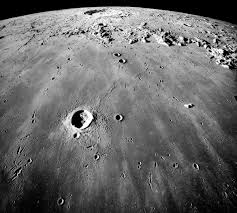The Moon, our closest celestial neighbor, has captivated humans for centuries with its mysterious beauty and awe-inspiring landscapes. One of the most intriguing features on the lunar surface is its craters. In this blog post, we will take a journey through the Moon’s craters, exploring their unique names, origins, and the significance behind their designations.
I. Naming the Moon’s Craters:
- Historical Perspective: Craters on the Moon have been named after various astronomers, scientists, explorers, and important figures in the history of astronomy. These names serve as a tribute to their contributions to the field.
- International Astronomical Union (IAU): The IAU is the governing body responsible for approving and assigning official names to celestial features, including lunar craters. Their guidelines ensure consistency and avoid duplication of names.
II. Famous Lunar Craters:
- Copernicus: Named after the renowned astronomer Nicolaus Copernicus, this large and prominent crater is located in the Oceanus Procellarum region of the Moon. It is characterized by its central peaks and extensive ray system.
- Tycho: Tycho is one of the Moon’s most recognizable craters, named after the Danish astronomer Tycho Brahe. It is known for its distinctive ray system that extends across the lunar surface.
- Plato: Named after the ancient Greek philosopher Plato, this crater is notable for its smooth floor and prominent central peaks. It is located in the northern part of the Moon.
- Archimedes: Archimedes is a large, ancient impact crater named after the Greek mathematician Archimedes. It is distinguished by its terraced walls and extensive ejecta blanket.
- Clavius: Clavius is one of the largest craters on the Moon, named after the German mathematician and astronomer Christopher Clavius. It is notable for its multiple central peaks and extensive system of smaller craters within its walls.
III. Regional Names and Lunar Maria:
- Lunar Maria: The dark, flat areas on the Moon’s surface are known as maria (singular: mare). These regions were named after the Latin word for “sea” due to their resemblance to bodies of water.
- Sea of Tranquility: The Apollo 11 mission famously landed in the Sea of Tranquility, also known as Mare Tranquillitatis. This area is named for its serene appearance and was the site of humanity’s first steps on the Moon.
- Sea of Serenity: Mare Serenitatis, or the Sea of Serenity, is another prominent lunar mare. Its name evokes a sense of tranquility and peacefulness.
- Ocean of Storms: Oceanus Procellarum, meaning “Ocean of Storms,” is the largest lunar mare. Despite its name, it does not correspond to an actual body of water but represents a vast volcanic plain.
IV. Tribute to Lunar Missions and Explorers:
- Apollo Craters: Several craters on the Moon are named after the Apollo missions and the astronauts who ventured there, such as Apollo 11’s Armstrong, Aldrin, and Collins craters.
- Lunar Orbiter Craters: Craters named after the Lunar Orbiter missions, which captured high-resolution images of the Moon’s surface, commemorate the pioneering efforts of space exploration.
Conclusion: The names of craters on the Moon serve as a tribute to the contributions of astronomers, scientists, and explorers who have shaped our understanding of the universe. These names not only provide a sense of identity to the lunar landscape but also serve as a reminder of humanity’s relentless curiosity and exploration of the cosmos.




















Add Comment